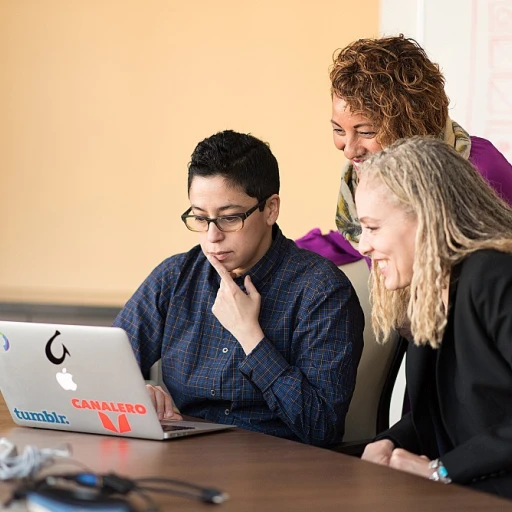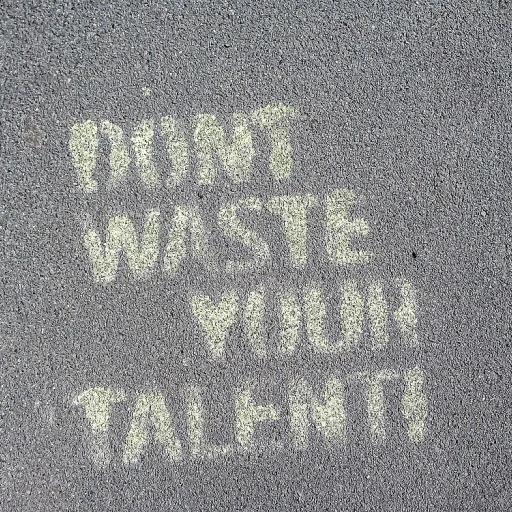
The Essence of the Working Genius Assessment
Discovering the Core of Working Genius
The Working Genius Assessment is an insightful tool that helps organizations decode the latent abilities of their employees. Crafted to provide clear insights into each individual’s natural gifts, the genius model is built on the principles set out by renowned organizational expert, Pat Lencioni.
This assessment goes beyond traditional metrics by delving into six distinct types of work. These types, known within the model as 'working geniuses', represent various areas where individuals can flourish. Understanding these types is crucial for businesses aiming to build cohesive teams and improve productivity.
Using a structured approach, the assessment pinpoints the inherent strengths that allow team members to thrive in their work environment. Here’s how it can be of significant benefit:
- Better Understand Team Dynamics: By identifying the unique strengths and natural gifts of each team member, organizations can form more effective and balanced teams.
- Filling Roles Effectively: The insights derived from the working genius framework enable leaders to assign roles that align with individual talents, thereby maximizing output.
- Individual Growth and Insights: Leveraging feedback from the genius assessment allows employees to discover their natural gifts and use them to their full potential.
The genius podcast and other resources from the Table Group provide real-world examples and practical advice on how to implement the model in various team settings. This approach not only aids in developing high potential employees but also paves the way for a thriving work life.
Identifying High Potential Employees
Spotting Talent and Untapped Potential
When it comes to harnessing the capabilities of high potential employees, it's essential to know what you are looking for. These employees aren't merely high achievers; they have the unique ability to grow into leadership roles and drive significant change within their organizations. Identifying such talent can be facilitated through assessments like the Working Genius Assessment, designed to discover natural talents and gifts that allow individuals to thrive at work.
High potential employees often exhibit a mix of certain characteristics that elevate their contributions to team dynamics:
- Natural Gifts: They possess innate abilities when it comes to problem-solving and innovation.
- Teamwork Enthusiasm: In collaboration, they amplify overall team performance by identifying each team member's strengths, helping to fill gaps within a team and align with different types of work effectively.
- Resilience and Learning Ability: Their quick adaptation to new challenges and environments signals their capacity for growth.
- Leadership Qualities: They not only grasp team dynamics but often step up to guide and inspire team members.
The genius model by Patrick Lencioni, discussed in his insights and the genius podcast, highlights six types of working geniuses that categorize different natural gifts and productivity areas. These insights help managers and HR professionals to better understand the unique capabilities and potential growth areas of each individual.
Working through these lenses not only benefits the organization but also helps in creating roles that allow employees to utilize their natural gifts effectively. Understanding these dynamics and types of work can lead to a thriving work life and an empowered workforce. To dive deeper into identifying and nurturing high potential employees, consider exploring detailed strategies for mastering the art of people management by unlocking high potential employees in this insightful resource.
Challenges Faced by High Potential Employees
Common Obstacles Encountered by High Achievers
High potential employees, often recognized through working genius assessments, are essential assets in any team. However, despite their intrinsic strengths and contributions, they frequently encounter unique challenges that can hinder their development and productivity. Understanding these barriers is crucial for organizations aiming to fully leverage these individuals' capabilities.
One common issue is the pressure to consistently perform at high levels. High potentials are sometimes perceived as having 'superhuman' work capacities, leading to unrealistic expectations and immense pressure. This can result in burnout, impacting their work-life balance and overall job satisfaction.
Another obstacle is the challenge of navigating team dynamics. Individuals identified as possessing a specific type of genius often find themselves thrust into leadership roles, even when their natural gifts might be better suited elsewhere. Misalignment between their abilities and their assigned responsibilities can lead to frustration and decreased engagement.
Effective communication is also central to addressing these challenges. Implementing the genius model can help clarify roles and responsibilities, ensuring that team members play to their strengths. Providing appropriate mentorship and guidance through insight-driven programs can further aid these individuals in thriving within their roles.
To explore strategic ways to support and develop high potential employees, consider reading our comprehensive guide on nurturing high potential employees. Such approaches not only help individuals flourish but ultimately contribute to organizational growth and success.
Leveraging Strengths for Organizational Growth
Harnessing the Power of Natural Gifts to Drive Success
Unlocking the full potential of high potential employees hinges on our ability to identify and leverage their natural gifts. When individuals thrive in their work, it's often because their roles allow them to play to their strengths. Embracing the Working Genius model provides a framework for understanding these strengths and how each team member contributes to the overall team dynamics. High potential employees often display a diversity of geniuses, contributing to various areas and types of work that help boost productivity. By using insights from the Working Genius assessment, organizations can better understand how to fill their teams with the right types of working abilities to complement one another.- Encouraging collaboration: Understanding the unique strengths of each individual fosters an environment where team members naturally turn to each other for support in areas where they may lack expertise.
- Promoting team synergy: Recognizing the complementary nature of different working types helps in creating a balanced team structure that thrives on diversity.
- Enhancing productivity: Allocating tasks that align with the natural gifts of the team members ensures higher efficiency and job satisfaction, as they are working within their genius zone.
- Building resilience: By having a well-rounded team filled with various types of working geniuses, organizations can demonstrate resilience in the face of challenges and adapt more swiftly to changing circumstances.
Strategies for Supporting High Potential Employees
Fostering Growth and Development
Supporting high potential employees requires an understanding of their unique genius assessment profile, recognizing their natural gifts, and providing opportunities for growth. Here are some strategies that can help harness their potential:- Tailored Development Plans: Create development plans that cater to individual strengths and areas of improvement. By better understanding each team member's working genius, managers can fill gaps and nurture talents that contribute to overall team productivity.
- Mentorship Programs: Implement mentorship and coaching programs to offer guidance from more experienced team members. These programs aid individuals in understanding the nuances of different work types, enhancing both personal and professional growth.
- Cross-functional Exposure: Offering opportunities for high potential employees to work across various teams or departments can be beneficial. This exposure helps them gain insights into different aspects of the business, increasing their adaptability and ability to thrive work.
- Feedback and Recognition: Regular feedback is crucial in helping individuals identify their strengths and areas that need improvement. In addition, recognizing accomplishments can motivate them to maintain high performance and further leverage their natural gifts.
- Flexible Work Arrangements: To ensure employees can thrive in a dynamic work environment, flexible work arrangements can be provided. These accommodate different types of working styles and enhance team dynamics by allowing for more personalized approaches to tasks.












